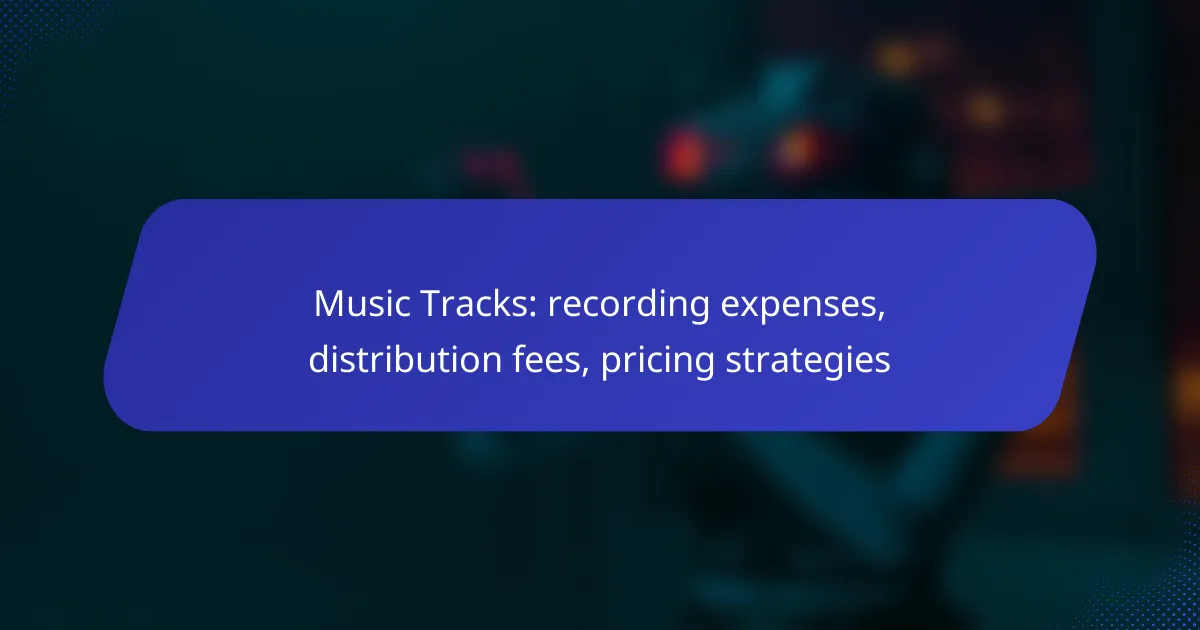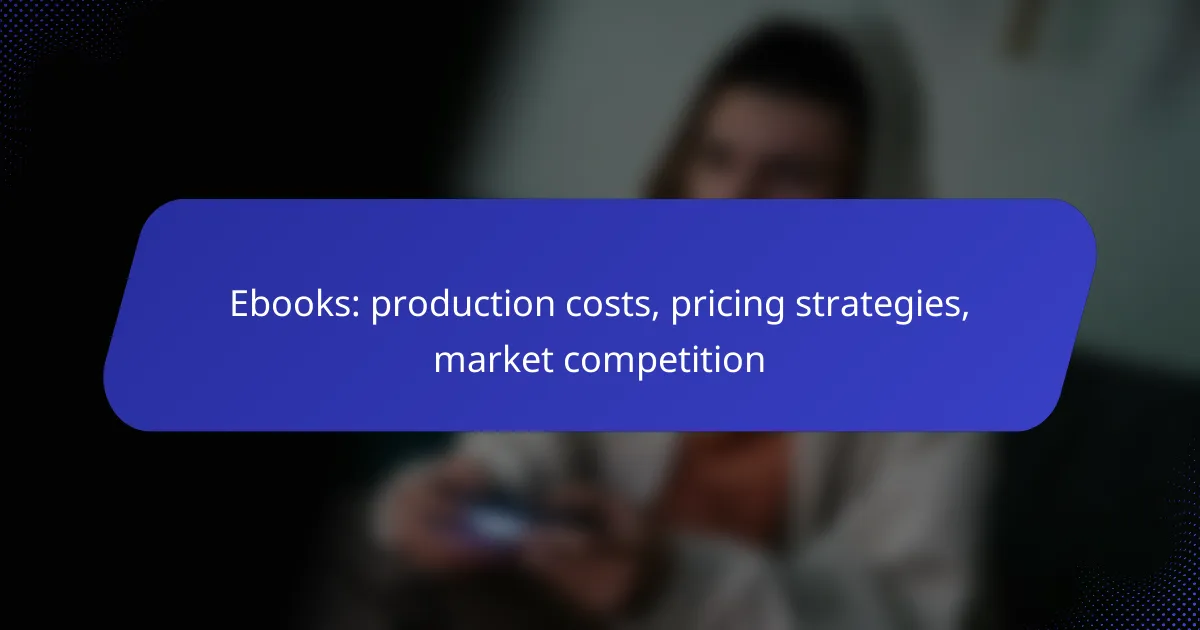When creating music tracks, understanding recording expenses is crucial for effective budgeting, as costs can fluctuate based on studio choice and production needs. Additionally, distribution fees play a significant role in determining the final pricing of tracks, impacting the revenue artists earn. To optimize profitability, artists must adopt effective pricing strategies that resonate with listeners while maximizing revenue potential.
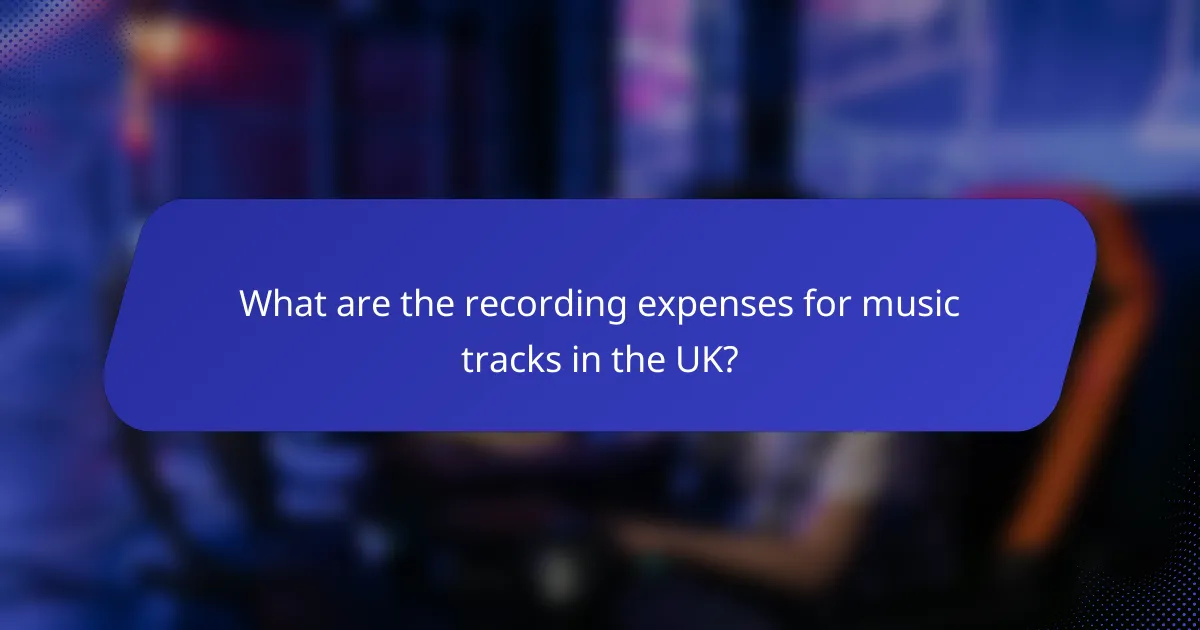
What are the recording expenses for music tracks in the UK?
Recording expenses for music tracks in the UK can vary significantly based on factors like studio choice, producer involvement, and additional services required. Understanding these costs is essential for budgeting and planning your music project effectively.
Studio rental costs
Studio rental costs in the UK can range from around £20 to £100 per hour, depending on the studio’s reputation and equipment quality. High-end studios in major cities may charge more, while smaller or home studios can offer more affordable rates.
When selecting a studio, consider not just the hourly rate but also the amenities provided, such as sound engineers and equipment. Booking in blocks can sometimes lead to discounts, so inquire about package deals.
Producer fees
Producer fees typically range from £200 to £1,000 per day, influenced by the producer’s experience and the project’s complexity. Established producers may command higher rates, while emerging producers might offer more competitive pricing.
Choosing the right producer is crucial; they can shape the sound of your track significantly. It’s advisable to discuss your vision and budget upfront to find a suitable match.
Session musician payments
Payments for session musicians in the UK usually fall between £100 and £300 per session, depending on their expertise and the demands of the track. Some musicians may charge per hour, while others may have a flat fee for the session.
When hiring session musicians, ensure you have clear agreements regarding payment and usage rights for their contributions. This can prevent misunderstandings later on.
Equipment rental expenses
Equipment rental expenses can vary widely, with costs for high-quality instruments and gear ranging from £50 to £500 per day. Specialized equipment, such as vintage microphones or unique instruments, may incur higher rental fees.
Consider whether it’s more cost-effective to rent or purchase equipment, especially if you plan to use it for multiple projects. Always check the rental terms for insurance and damage policies.
Mixing and mastering costs
Mixing and mastering costs in the UK typically range from £200 to £1,000 per track, depending on the complexity and the engineer’s experience. Mixing focuses on balancing the individual tracks, while mastering ensures the final product is polished and ready for distribution.
Investing in professional mixing and mastering can significantly enhance your track’s quality. It’s advisable to listen to previous work by the engineer to ensure their style aligns with your vision.
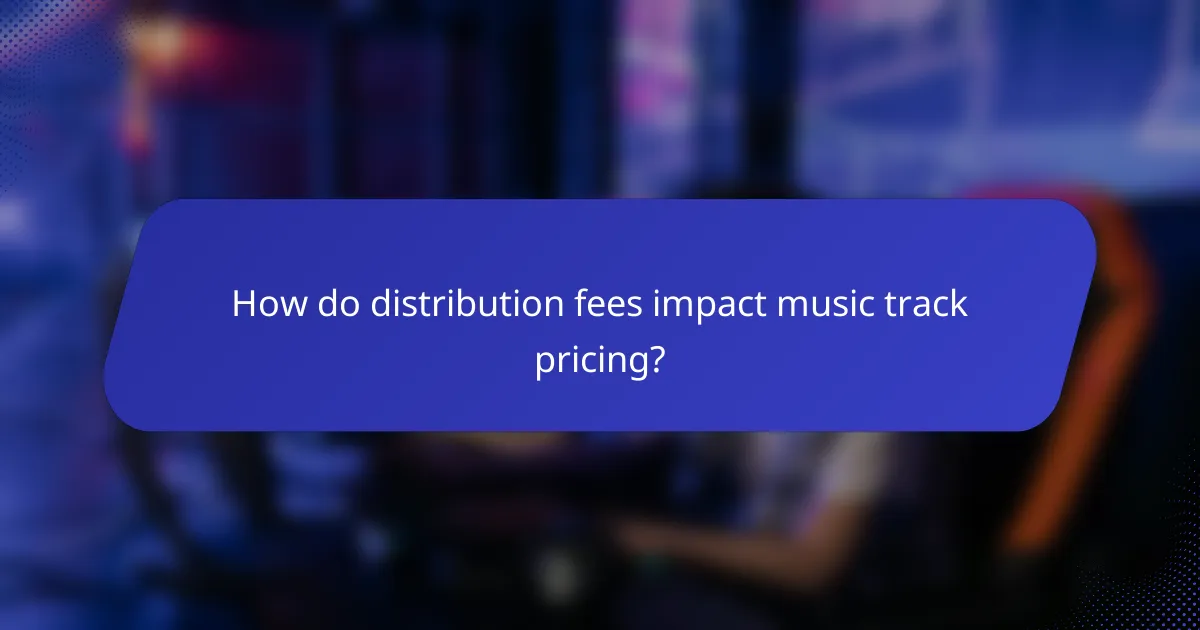
How do distribution fees impact music track pricing?
Distribution fees significantly affect the pricing of music tracks by reducing the revenue artists receive from sales. These fees can vary widely depending on the platform and distribution method chosen, influencing how artists set their prices to maintain profitability.
Digital distribution platform fees
Digital distribution platforms typically charge fees that can range from a flat rate to a percentage of sales. Common platforms like DistroKid or TuneCore may charge anywhere from $10 to $50 annually, plus a percentage of sales, often around 15%. Artists must factor these costs into their pricing strategies to ensure they cover expenses while remaining competitive.
Additionally, some platforms may have tiered pricing based on the number of tracks or albums distributed, which can impact overall costs. Understanding these fee structures is crucial for artists to maximize their earnings.
Physical distribution costs
Physical distribution involves costs such as manufacturing, shipping, and storage of CDs or vinyl records. Manufacturing costs can vary, with pressing vinyl typically ranging from $1 to $5 per unit, depending on quantity and quality. Shipping costs will also depend on the destination and volume, which can add up quickly for independent artists.
Artists should consider these expenses when pricing physical copies of their music. Offering bundles or limited editions can help offset costs and attract buyers willing to pay a premium.
Royalty payment structures
Royalty payment structures determine how artists earn from their music, impacting pricing strategies. Common structures include mechanical royalties, performance royalties, and digital streaming royalties, each with different payout rates. For example, mechanical royalties for physical sales might be around 9 cents per song, while streaming services often pay fractions of a cent per stream.
Understanding these payment structures is essential for artists to set appropriate prices for their tracks. They should also be aware of the potential for varying rates across different platforms and formats, which can influence overall revenue. Regularly reviewing contracts and agreements with distributors can help artists optimize their earnings.
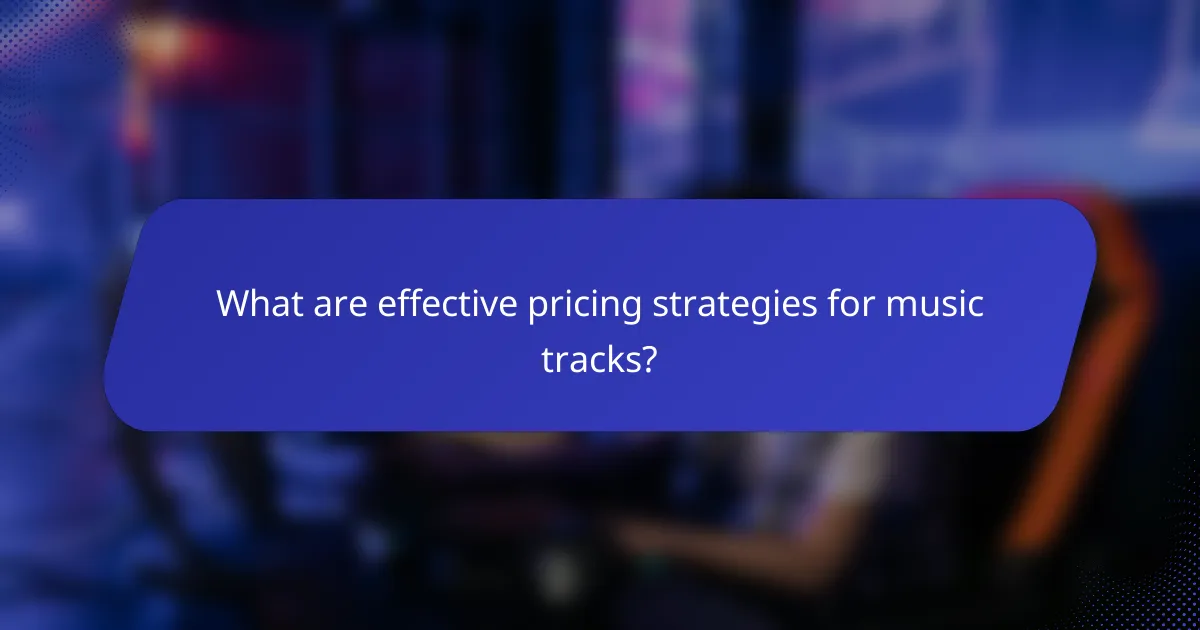
What are effective pricing strategies for music tracks?
Effective pricing strategies for music tracks involve methods that maximize revenue while appealing to listeners. Key approaches include dynamic pricing models, bundling strategies, and market-based pricing, each offering unique benefits and considerations for artists and labels.
Dynamic pricing models
Dynamic pricing models adjust the price of music tracks based on demand, time, or consumer behavior. For example, prices may be higher during peak release periods or lower during promotional events. This strategy can optimize revenue by capturing consumer willingness to pay at different times.
To implement dynamic pricing, consider using data analytics to track sales trends and audience engagement. Be cautious of overpricing, as it may alienate potential listeners. A common approach is to offer initial lower prices that gradually increase as demand grows.
Bundling strategies
Bundling strategies involve offering multiple music tracks or related products together at a discounted rate. This can encourage fans to purchase more than they initially intended, increasing overall sales. For instance, an album might be bundled with exclusive merchandise or bonus tracks.
When using bundling, ensure that the perceived value is clear to consumers. Avoid bundling too many items, as it may overwhelm buyers. A typical practice is to offer a 10-20% discount on bundles compared to individual track purchases.
Market-based pricing
Market-based pricing sets prices based on the competitive landscape and consumer expectations. This strategy requires research into what similar artists charge for their music tracks. Understanding the market helps in positioning your music effectively among peers.
To adopt market-based pricing, regularly analyze competitors’ pricing and adjust your rates accordingly. Be aware of industry standards; for example, digital tracks often range from $0.99 to $1.29 in the U.S. market. Avoid pricing yourself too low, as it may devalue your work in the eyes of consumers.
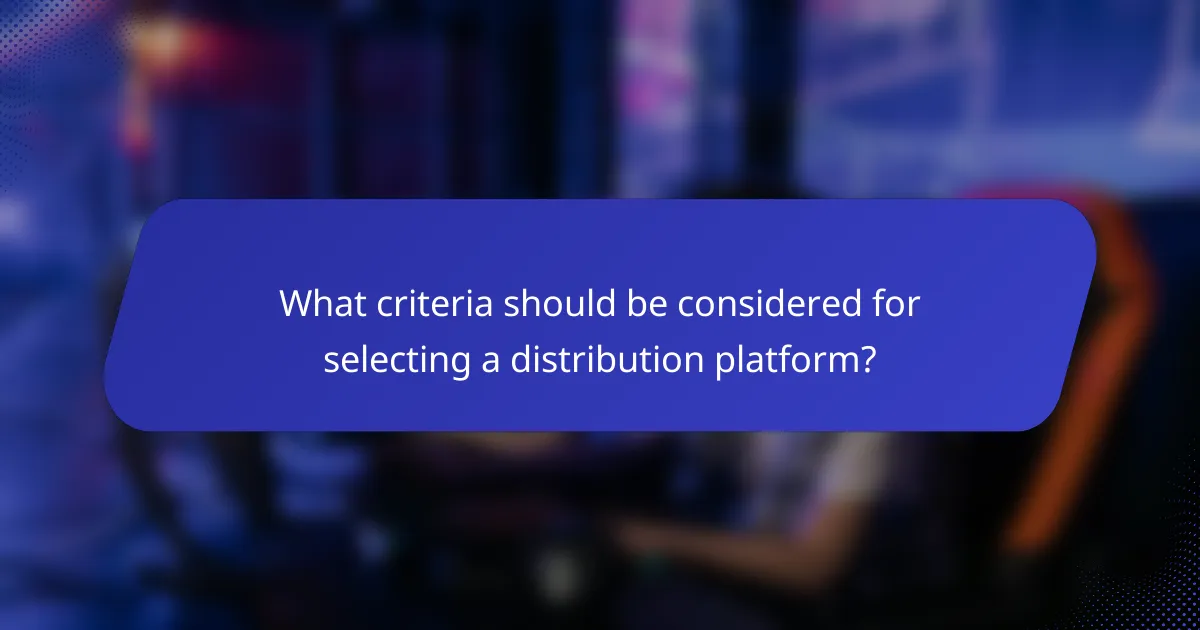
What criteria should be considered for selecting a distribution platform?
Selecting a distribution platform involves evaluating several key criteria that impact your music’s reach and profitability. Consider factors such as audience access, fee structures, and the platform’s user-friendliness to ensure it aligns with your goals.
Platform reach and audience
The reach of a distribution platform refers to the number of listeners and the geographical areas it covers. Platforms like Spotify and Apple Music have extensive global audiences, while others may focus on niche markets. Assess whether the platform targets your desired demographic to maximize exposure.
Research the platform’s user base and engagement metrics. A platform with millions of users may offer more potential listeners, but a smaller platform might cater specifically to your genre, leading to higher engagement rates.
Fee structures and royalties
Understanding the fee structures and royalty rates is crucial when selecting a distribution platform. Most platforms charge a percentage of your earnings or a flat fee for distribution services. For instance, some may take 15-30% of your streaming revenue, while others might offer a pay-per-release model.
Review the terms of service to identify any hidden fees, such as annual fees or costs for additional services like marketing. Calculate potential earnings based on your expected streams to determine which platform offers the best financial return.
Ease of use and integration
The ease of use of a distribution platform can significantly affect your workflow. Look for platforms that provide intuitive interfaces and straightforward processes for uploading music, managing releases, and tracking performance. A user-friendly platform can save you time and reduce frustration.
Consider how well the platform integrates with other tools you use, such as social media or analytics services. Seamless integration can enhance your promotional efforts and help you monitor your music’s success more effectively.
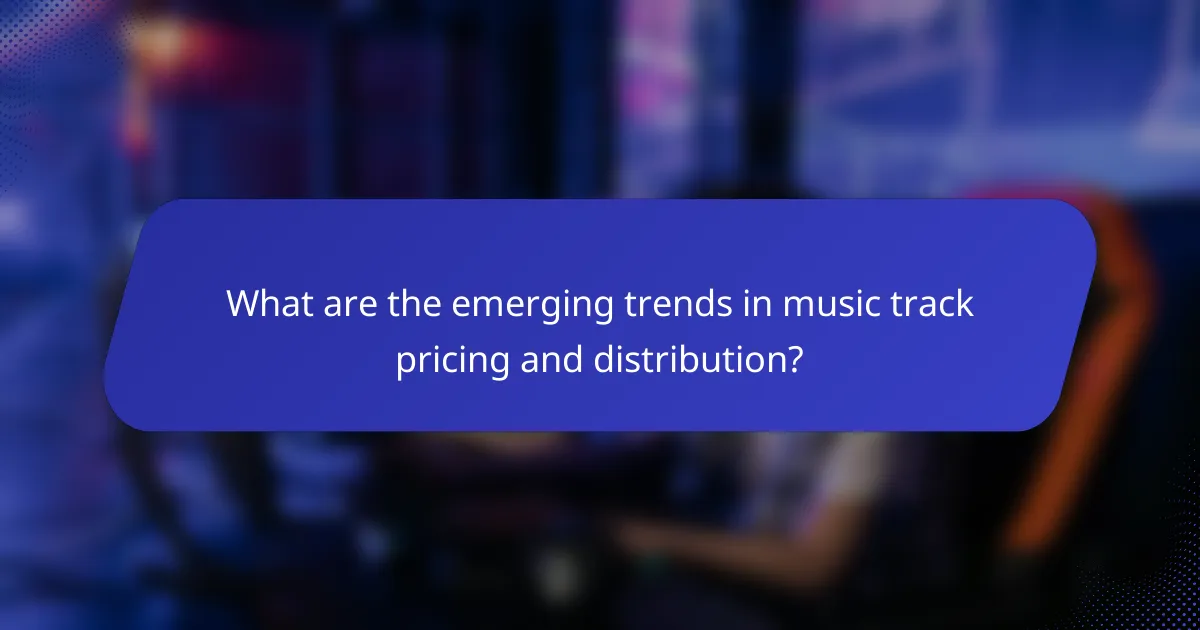
What are the emerging trends in music track pricing and distribution?
Emerging trends in music track pricing and distribution reflect a shift towards digital platforms and flexible pricing models. Artists and labels are increasingly using subscription services, pay-per-stream models, and direct-to-fan sales strategies to maximize revenue and reach audiences.
Recording Expenses
Recording expenses for music tracks can vary widely based on factors such as studio location, equipment quality, and producer fees. Independent artists may spend anywhere from a few hundred to several thousand dollars for a single track, depending on their production choices. It’s essential to budget for not just studio time but also mixing, mastering, and any additional musicians or vocalists.
To manage recording costs effectively, consider using home studios or digital audio workstations (DAWs) for initial demos. Collaborating with emerging producers can also reduce expenses while providing fresh perspectives on sound.
Distribution Fees
Distribution fees are charges incurred when releasing music through digital platforms like Spotify, Apple Music, or Bandcamp. These fees can range from a flat rate per release to a percentage of sales, typically between 15-30%. Understanding the fee structure of each platform is crucial for maximizing profits.
Many artists opt for aggregators that bundle distribution services, often providing better rates and wider reach. Be sure to read the fine print regarding royalties and rights management to avoid unexpected costs.
Pricing Strategies
Pricing strategies for music tracks have evolved with the rise of streaming services. Many artists now adopt a tiered pricing model, offering different price points for singles, albums, and exclusive content. This approach can help cater to diverse audience segments and encourage higher sales volumes.
Consider implementing promotional pricing during the launch phase or bundling tracks with merchandise to enhance perceived value. Regularly reviewing pricing strategies based on market trends and fan engagement can lead to better revenue outcomes.
